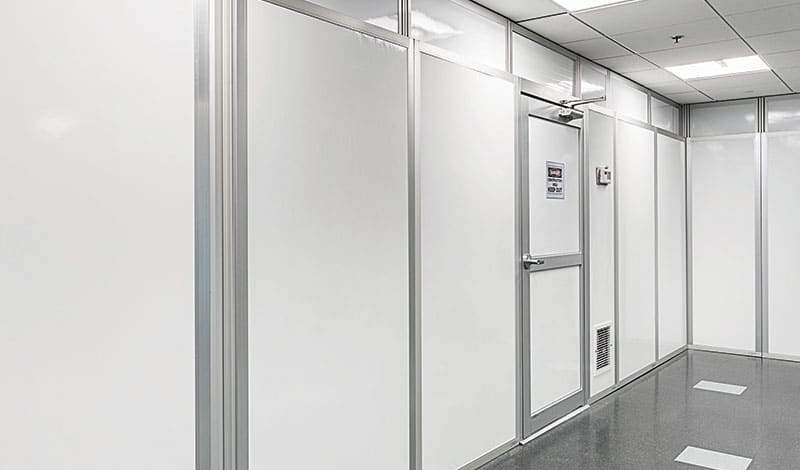
Key Differences Between Temporary and Permanent Installations
Whether installed for permanent or temporary use, prefabricated modular walls can be the perfect solution for expanding a business or simply creating more efficient spaces. But with so many competing solutions on the market, how do you determine which is right for your project? Start by considering your installation timeframe.
Walls for the Long Term
Modular walls for permanent installations are built to last, ultimately becoming part of the building’s structure. They provide a great option for large, empty areas that require subdivision, such as an office space.
In these cases, you’re looking for a durable, permanent solution that will look good many years down the road. More permanent prefabricated solutions, such as glass office dividers, exist to divide a long-term space. Demountable walls, which typically sit in tracks, are custom-built for permanent installation but do allow for some level of configuration. Permanent walls may also include integrated technology, such as negative air panels.
What to Look For:
- Demountable systems that use tracks
- Integrated technology, such as negative air capability
When going for a permanent look, walls come in many materials and styles to match the general aesthetic and professionalism of the surrounding space.
Short-Term Solutions
Temporary modular wall systems, on the other hand, forgo the heavy installation requirements of their permanent counterparts, enabling speed, flexible reconfiguration, and easy set-up.
A construction site, for example, may rely upon temporary reusable construction walls to contain noise, dust, and debris during an occupied renovation, or to redirect foot traffic. These walls are quickly installed, dismantled, and reinstalled as the project progresses through multiple phases.
During renovations to high-traffic areas, like hospitals or airports, prefabricated modular walls are used to contain construction areas and minimize construction activity’s impact on building occupants.
Higher-quality temporary wall systems are engineered to be highly durable, with reconfigurable panels designed for reuse over many projects. No matter the layout or purpose of your space, prefabricated modular walls provide a high-quality result that is fast to install and easy to reconfigure.
If your project requires flexibility, choosing a modular wall solution that installs quickly, is easily configurable, and is durable enough to withstand reconfiguration is essential.
What to Look For:
- Set-up speed and ease of installation
- Accessories for added configurations
- The option to buy or rent in support of your break-even point
- Durable enough to withstand transportation and reinstallation
Knowing your installation timeframe will eliminate inappropriate solutions from consideration and help steer you toward the temporary wall system best suited for your project.
In our next blog post, we’ll consider whether your project area is sensitive to dust and debris and how air quality and sensitivity requirements should direct your product selection.
No time to Wait?
Learn more about prefabricated modular walls by downloading our Definitive Guide. Or contact us to get a quote or discuss your specific project requirements.
